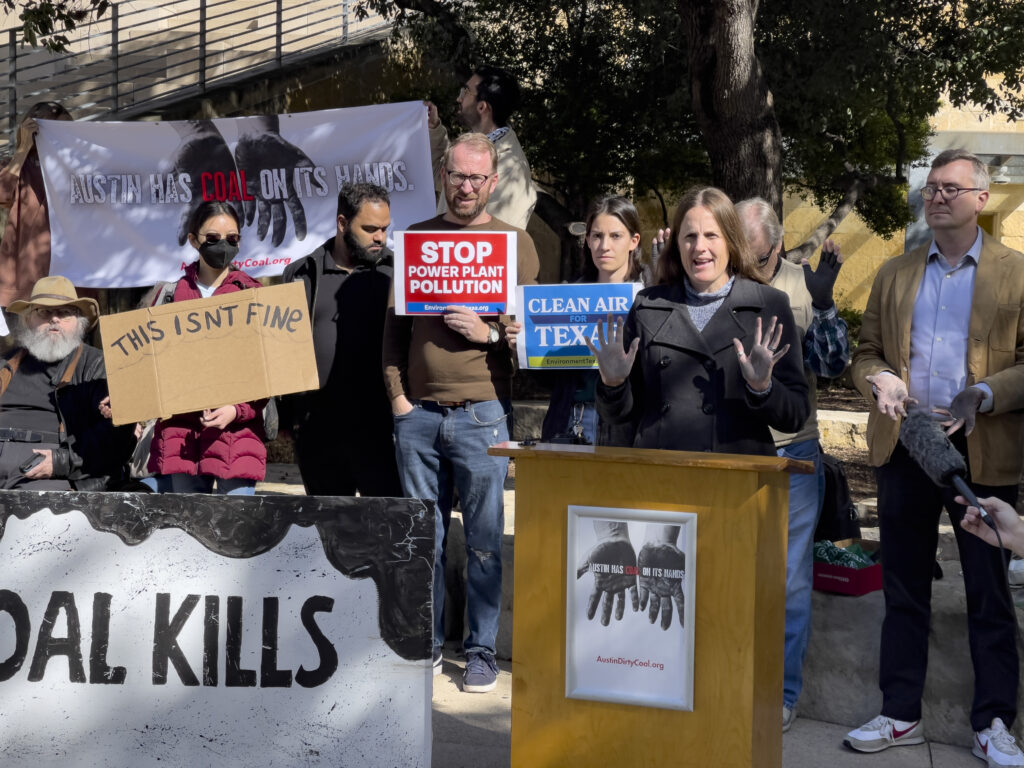A Path to Affordable Clean Energy for Austin
A Look at the Austin Energy Resource, Generation and Climate Protection Plan Update
By Kaiba White
Public Citizen’s Texas office places a strong emphasis on local planning and action as a way to make progress in fighting climate change in a place like Texas, where state policymakers are more likely to support subsidizing fossil fuels than protecting public health (let alone addressing the climate crisis). Hence, our ongoing efforts over decades to coax, nudge, and push Austin Energy to invest in renewable energy and other clean energy solutions to phase out the utility’s fossil fuels.

Austin Energy has a 10-year plan – called the Austin Energy Resource, Generation and Climate Protection Plan (Resource Plan) – that establishes goals for decarbonizing the utility while maintaining affordability and reliability for its customers. Every few years, the plan gets updated to reflect current technology availability and affordability, and changes in the electric market. The end result is, hopefully, a new version that is responsive to the current state of the environment.
In December 2022, the Austin City Council told Austin Energy it was time to update the Resource Plan. Austin Energy started the process in August 2023 with a few public meetings and a survey. It’s worth noting that 66% of residential survey respondents indicated they would be willing to pay more for carbon-free energy.
The Electric Utility Commission (EUC) – an advisory body to the Austin City Council on which I serve – established a Resource Planning Working Group to make recommendations on the update. On February 1, the working group released its recommendations.
The plan recommended by the working group is lengthy, but here are some key provisions:
- It establishes a pathway for replacing Austin Energy’s fossil fuel resources with a suite of clean energy options. This includes the top priority of shutting down Austin Energy’s portion of the Fayette coal plant and phasing out Austin Energy’s local gas-burning power plants.
- A combination of local solar, utility-scale wind and solar, batteries, energy efficiency and demand response (using energy smarter) to provide energy when and where Austin Energy needs it to maintain reliability and affordability
- Eliminates greenhouse gas emissions and other air pollution from its activities.
Because Austin Energy has identified a need for more local energy production the expansion of local solar is important. There are limited energy production options within the Austin Energy service territory, so the choice really comes down to building more gas-burning generation or ramping up the use of local solar. And because local land values are high, much of that solar will need to be deployed on rooftops.
The good news is that Austin has over 2,000 megawatts of rooftop solar potential (the state’s grid manager, ERCOT, estimates that 1 megawatt can power 200 homes). Public Citizen is working with Austin Energy on solutions that will encourage rooftop solar deployment without investment by property owners. One program under development is a Standard Offer for Rooftop Solar, which would allow solar developers to rent out roof space from property owners and provide energy to the utility at a fixed rate. Another possibility is to implement an Inclusive Utility Investment program. The local solar resource is plentiful and solar technology is available and affordable over time, so establishing equitable financing mechanisms is the next step to achieving the scale we need.
Austin Energy also needs resources it can control in order to respond to local price spikes and provide voltage and frequency support to the grid in a way that avoids high costs. While Texas politicians would have us believe that only a gas-burning power plant can serve those needs, that is, thankfully, not the case. Batteries are now serving that role at other utilities and across the ERCOT grid. Batteries can respond to grid needs even faster than gas-burning peaker plants, which sit idle until called upon during time of high demand. Better still, batteries can be paired with renewable energy sources to provide 24/7 clean energy.
Developing a robust demand response portfolio is also key to that mission. Some businesses are willing to shift their operations to a different time in exchange for compensation. Likewise, residential customers can provide demand response by allowing Austin Energy to temporarily adjust their thermostats in exchange for a payment. These programs should be expanded to achieve maximum benefit for the utility and its customers.
Austin Energy has now committed to working collaboratively with the Electric Utility Commission and the community to develop final recommendations to send to the Austin City Council. This may entail an additional survey or other opportunities for community input. We’ll be sure to keep you informed.
Kaiba White is climate policy and outreach specialist for Public Citizen